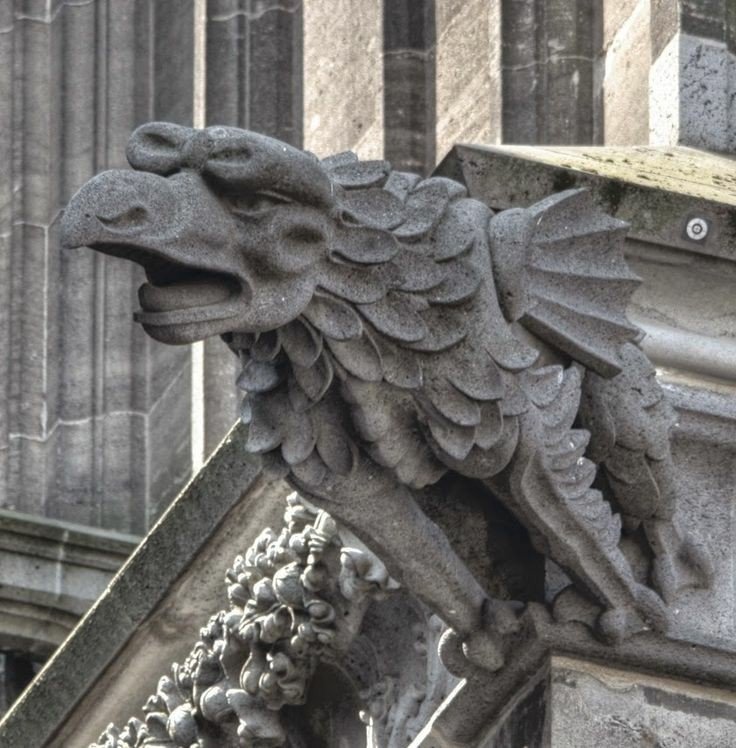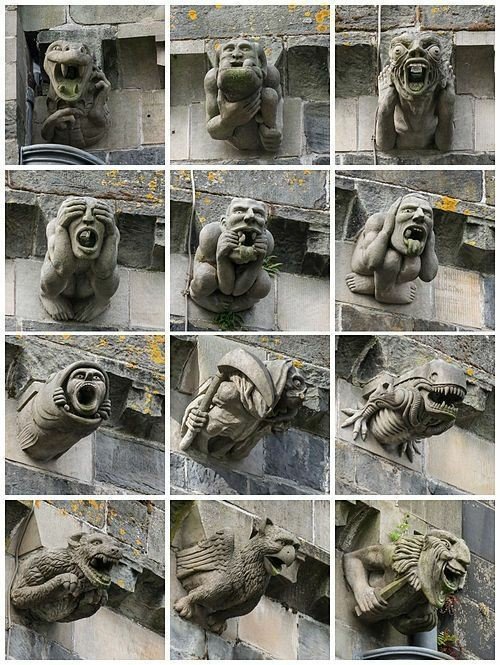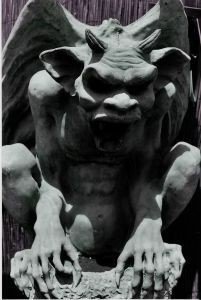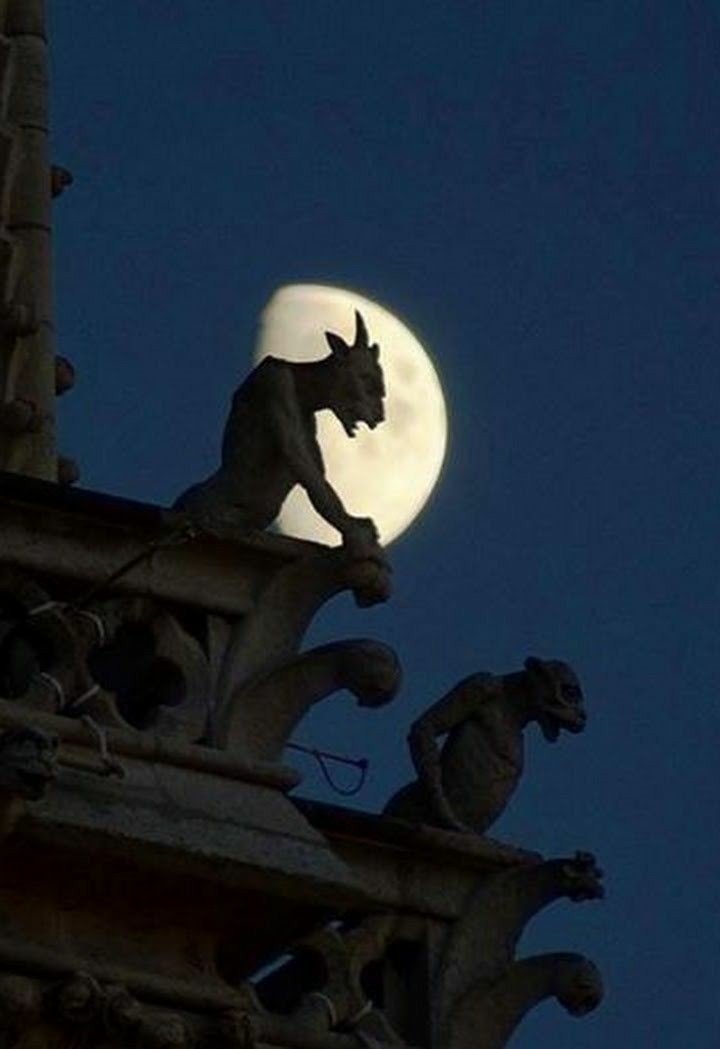
Las gárgolas pueden ser asociadas principalmente con la arquitectura, ya que están presentes en muchas estructuras clásicas, destacando catedrales o iglesias, donde cumplen las funciones de conductos por donde se vierte el agua de la lluvia de los tejados. Generalmente sobresalen del contrafuerte o pared.
Esto en su sentido físico, sin embargo, en su etimología proviene de la palabra francesa "Gargouiller" (gorgoteo), haciendo clara referencia al sonido que produce un líquido cuando pasa por el interior de una cavidad, es decir el sonido que se genera cuando el agua de lluvia es expulsada a través de las gárgolas.
Con relación a su origen simbólico, existen diversas teorías o versiones, de las que destacan:
- Se trata de guardianes que protegen loa edificios y provocan terror.
- Almas condenadas a las que se prohibe la entrada a la iglesia
- Demonios que son obligados a participar en la construcción de loa templos o que fueron vencidos por la iglesia.
- Como advertencia.
Ahora bien, en cuanto a su iconografía, se pueden ver gárgolas en forma de animales reales, humanos y criaturas fantásticas o seres mitológicos.

Entre los animales que son representados destacan: leones, perros y águilas. Por su parte, los seres fantásticos son grifos, harpías, demonios, sirenas o cualquiera que surja de la creatividad del artista.
A razón de que su objetivo principal -omitiendo el sentido práctico de su función de desagüe-, es el de generar temor, entonces los artistas los creaban como híbridos de animales y humanos; exagerando su fealdad, con alas, escamas, o más miembros de lo normal. Sus expresiones faciales siempre deben dar una impresión de terror, por lo tanto eran representados con muecas, gritando o sacando la lengua.

Gargoyles: Symbolism and iconography [Esp-En]
Gargoyles can be associated mainly with architecture, since they are present in many classical structures, highlighting cathedrals or churches, where they serve as conduits through which rainwater is poured of the roofs.They generally protrude from the buttress or wall.
This in its physical sense, however, in its etymology comes from the French word "Gargouiller" (gurgling), making clear reference to the sound produced by a liquid when it passes through the interior of a cavity, that is, the sound that is generated when rainwater is expelled through the gargoyles.
In relation to its symbolic origin, there are various theories or versions, of which the following stand out:
- These are guardians who protect buildings and cause terror.
- Doomed souls barred from church
- Demons that are forced to participate in the construction of temples or that were defeated by the church.
- As a warning.
Now, as for its iconography, you can see gargoyles in the form of real animals, humans and fantastic creatures or mythological beings.

Among the animals that are represented, the following stand out: lions, dogs and eagles. On the other hand, the fantastic beings are griffins, harpies, demons, mermaids or anyone that arises from the creativity of the artist.
Because their main objective -omitting the practicality of their drainage function-, is to generate fear, so the artists created them as hybrids of animals and humans; exaggerating its ugliness, with wings, scales, or more limbs than normal. Their facial expressions should always give an impression of terror, therefore they were depicted as grimacing, screaming or sticking out their tongues.
The rewards earned on this comment will go directly to the person sharing the post on Twitter as long as they are registered with @poshtoken. Sign up at https://hiveposh.com.
Todo un paseo por esas historias, aunque algunas figuras nos llenan de temor y conjeturas. Muchísimo éxito en está semana de escritura. Un abrazote @flormarsal